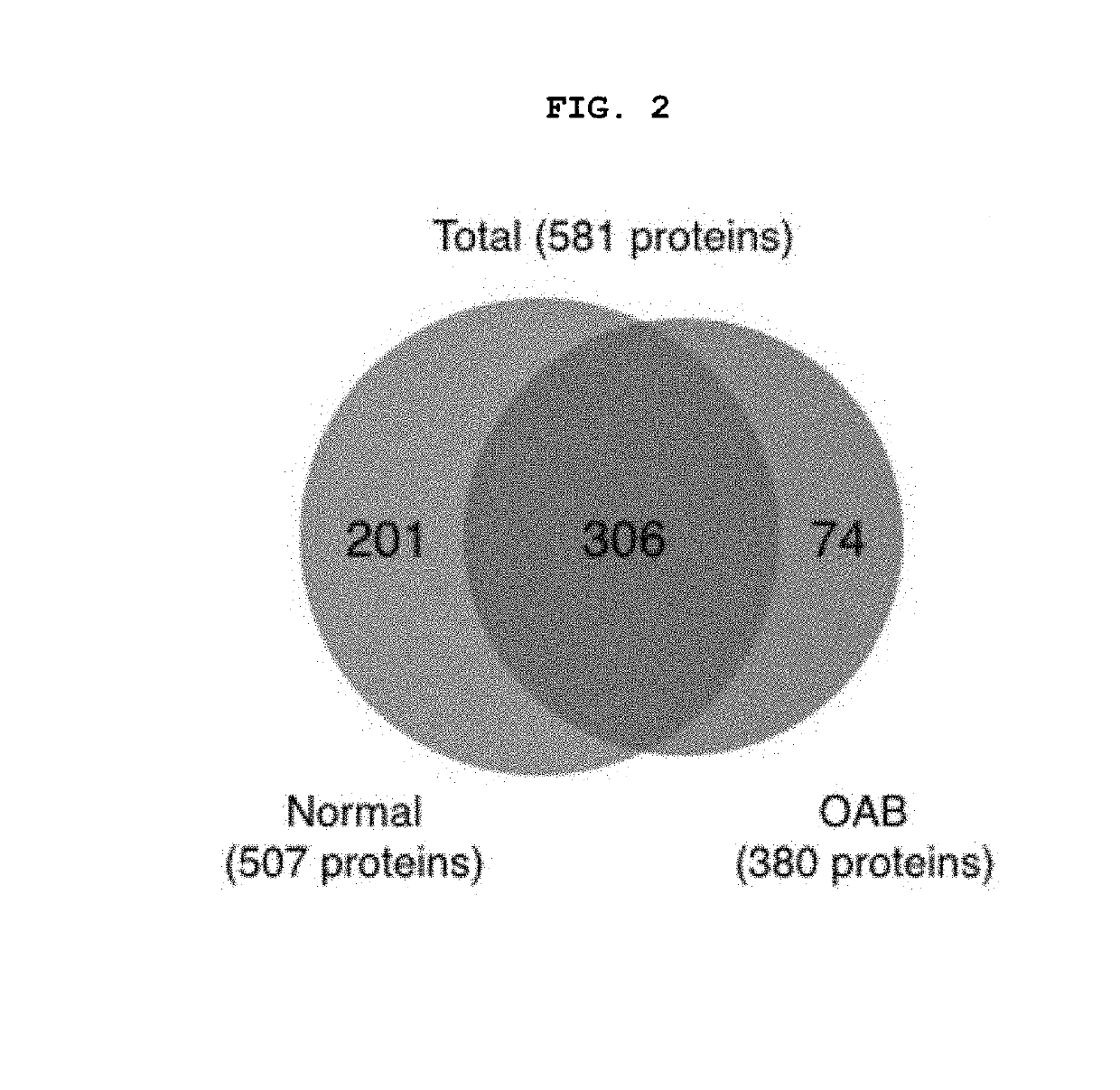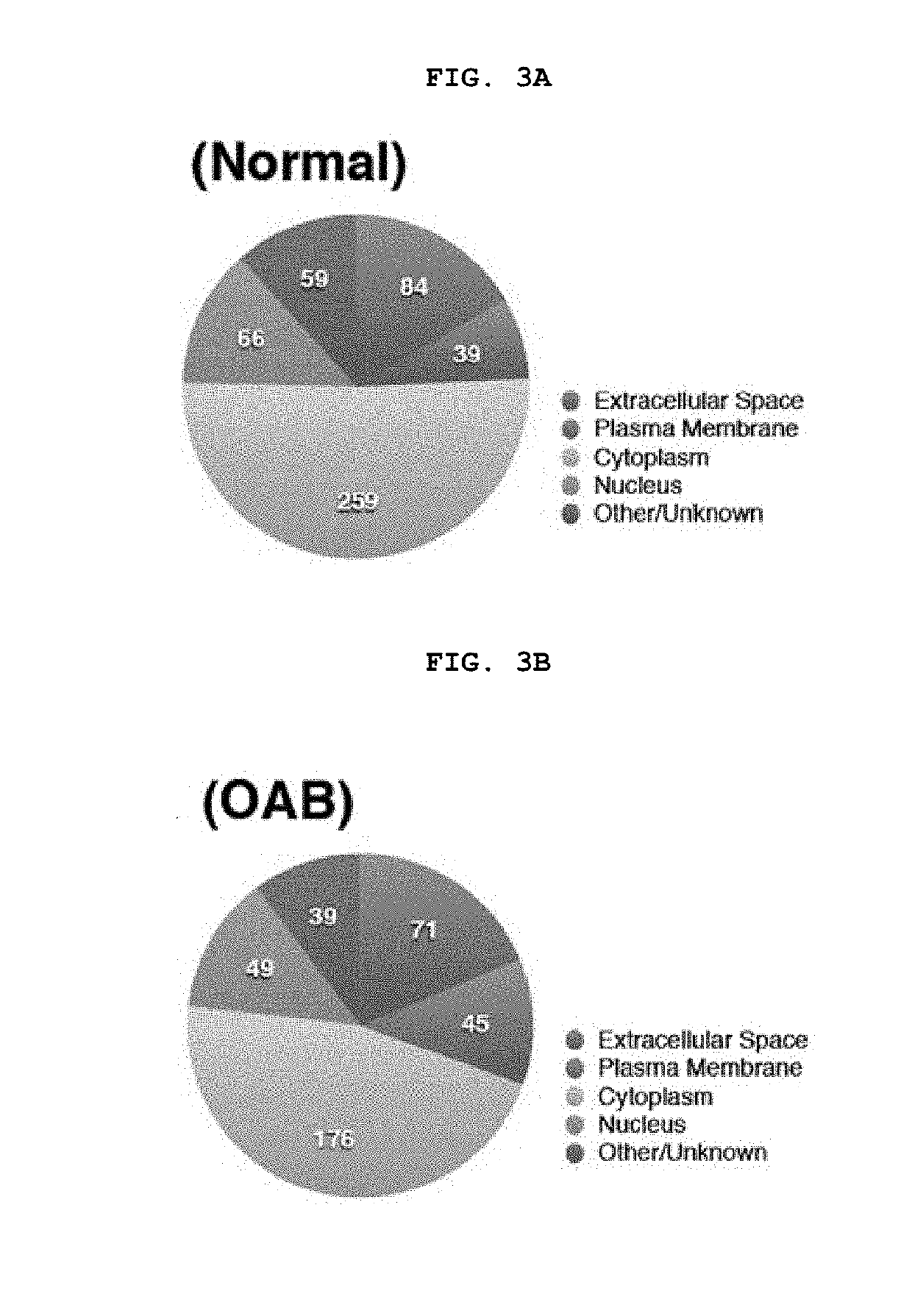Biomarker for diagnosing overactive bladder disease and screening method of therapeutic agents using the same
a technology for overactive bladder and biomarkers, applied in the field of biomarkers for diagnosing overactive bladder and a screening method of therapeutic agents, can solve the problems of serious financial burden on society, oab can often have a negative impact on the quality of life, and the negative impact of health-related quality of li
- Summary
- Abstract
- Description
- Claims
- Application Information
AI Technical Summary
Benefits of technology
Problems solved by technology
Method used
Image
Examples
example 1
ment of Mouse Model Having OAB (Overactive Bladder) Disease
[0167]It is well known that OAB can be induced by bladder outlet obstruction (BOO), and especially when there is benign prostate hyperplasia, symptoms of bladder outlet obstruction appear and OAB disease is often accompanied by it. Because the effect of bladder outlet obstruction in humans can be induced surgically in animal models, an animal model having a partial bladder outlet obstruction was used in the OAB study. To investigate the protein expression profile of OAB urothelium, OAB mouse models were constructed. Partial bladder outlet obstruction was induced by a surgical procedure that bound the urethra of the rat. A significant increase in bladder weight was observed in the OAB group compared to the control group (Table 1).
TABLE 1Results of bladder weight and cystometric analysis inexperimental animals (Infusion rate = 10 ml / h)GroupshamOABp-valuesbladder weight (mg)105.5 ± 9.4 194.7 ± 12.8 Micturition interval (MI)8.76...
example 2
ation of Proteins Associated with OAB
[0169]To examine the difference in protein expression between the urothelium of the sham control bladder and OAB urothelium, urothelium was carefully removed from the smooth muscle layer. Proteins were extracted and analyzed using the LTQ-Velos ESI ion trap mass spectrometer. A total of 507 proteins were detected in urothelium of sham control rats and 380 proteins were detected in urothelium of OAB rats (See FIG. 2).
[0170]Of these, 306 (52.7%) proteins were generally expressed in urothelium of sham control and OAB. By contrast, 201 proteins were found in the sham control urothelium and 74 proteins were found in the OAB urothelium, respectively. A large number of proteins expressed in the sham control urothelium (201 out of 507 (39.6%)) were found to be inhibited in the OAB urothelium. 19.5% (74 of 380) of proteins were expressed in the OAB urothelium, but not expressed in the sham control urothelium (See FIG. 2 and Table 2). Also, the expression ...
example 3
l Annotation of Differentially Expressed Proteins
[0172]In order to analyze the data at the pathway and network level, 355 differentially expressed proteins were analyzed using Ingenuity Pathway Analysis (IPA). The 34 identified canonical pathways are shown in FIG. 5, which represents the top 20 most significant canonical pathways combined in the urothelium of sham control and OAB. In OAB urothelium, inflammatory pathways such as the complement system, acute phase response signaling, LXR / RXR activation and p38 MAPK signaling have been markedly up-regulated. In contrast, signaling pathways associated with cytoskeletal organization including ILK signaling, RhoA signaling, and remodeling of epithelial adherence junctions are generally down-regulated in OAB urothelium. Proteins involved in unfolded protein response (ER stress) were down-regulated and proteins involved in death receptor signaling were up-regulated.
PUM
| Property | Measurement | Unit |
|---|---|---|
| diameter | aaaaa | aaaaa |
| flow rate | aaaaa | aaaaa |
| mass | aaaaa | aaaaa |
Abstract
Description
Claims
Application Information
 Login to View More
Login to View More - R&D
- Intellectual Property
- Life Sciences
- Materials
- Tech Scout
- Unparalleled Data Quality
- Higher Quality Content
- 60% Fewer Hallucinations
Browse by: Latest US Patents, China's latest patents, Technical Efficacy Thesaurus, Application Domain, Technology Topic, Popular Technical Reports.
© 2025 PatSnap. All rights reserved.Legal|Privacy policy|Modern Slavery Act Transparency Statement|Sitemap|About US| Contact US: help@patsnap.com



